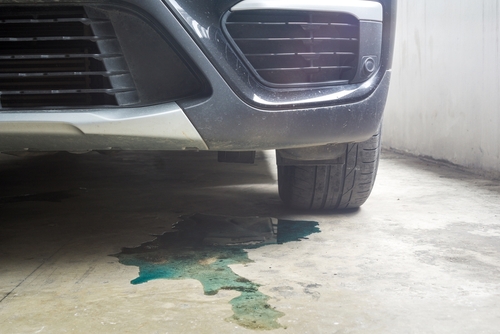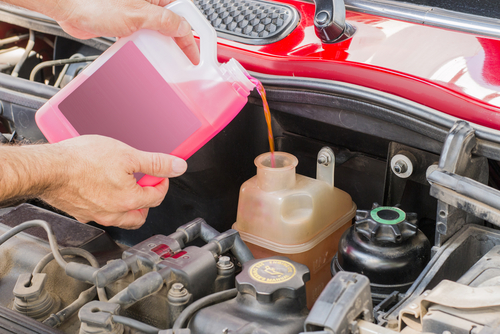
What Are The Dangers Of Not Changing Car Tyres?
December 15, 2021
How to Keep My Car Pests Free?
March 15, 2022Signs That Your Vehicle Needs An Coolant Service

Signs That Your Vehicle Needs An Coolant Service As a first-time car owner, you may be wondering how to tell if your vehicle needs coolant. Adding the fluid keeps it running reliably and at a great temperature. Without it, overheating can occur, which would result in costly car repairs.
What are the symptoms when my car needs coolant?

Most cars use engine coolant, which usually has green dye in it. If you see green liquid in both reservoirs, then this is an indicator that your car needs coolant. If the green color is only in one reservoir, then you may leak.
Another symptom could be if your car overheats or has problems turning on. For cars that don’t use coolant, there will typically be an oil cap with writing saying “check the coolant.”
5 Signs That Your Vehicle Needs An Antifreeze/Coolant Service

1. Temperature Gauge Fluctuates
If you notice that your temperature gauge fluctuates when driving, it may be time to get an antifreeze/coolant service. The fluctuations typically happen while driving on the freeway and not in stop-and-go traffic or at slow speeds.
2. Coolant Levels Are Low
Check the coolant levels at least once every month, but before getting an antifreeze/coolant service is recommended if they are low even after checking them multiple times. There should be at minimum behalf of a container full of coolant in each reservoir. If there isn’t enough, then this is another indicator that your vehicle needs an antifreeze/coolant service.
3. Car Overheats
Car overheating occurs when the water/antifreeze mixture inside of your radiator boils. You can tell if your vehicle is overheating by looking at the temperature gauge or by listening for unusual sounds coming from the engine, like hissing. If you’re worried that you are losing too much coolant, look under the car for wet spots on the pavement.
Also, check both reservoirs to see if they are empty of any color fluid.
4. Cooling Fan Doesn’t Turn On
If your car’s cooling fan doesn’t turn on, then it may be an indicator that there is a problem with it. Your vehicle needs antifreeze/coolant to run smoothly and safely, so have it checked and refilled if needed.
5. Rust and Bugs on the Hood
If you notice rust and bugs around the edges of your hood, this may indicate a leak in your radiator or other engine components which require antifreeze/coolant. Other parts where there may be leaks are hoses, so look for any wet spots along with them as well.
Another indicator is white smoke coming from the exhaust pipe because it could mean you have steam coming from an antifreeze/coolant leak under the car.
How do I add coolant to my car?

If your vehicle needs coolant, then adding it yourself can save you money in labor costs at a local car repair shop. That’s what you should know about how to add antifreeze/coolant to your car.
Step 1:
Check the level of the coolant and make sure that it is at a maximum of one-third full in both reservoirs. You can do this by removing the caps and looking inside them. You’ll also want to look for green or yellowish fluid inside the reservoir and check the radiator cap, which will typically show a red line near its top.
You’re better safe than sorry, so if there isn’t enough coolant in either reservoir, you’ll need to fill them up with water until they are one-third full or pour more in each reservoir until they reach the appropriate levels.
Then replace the caps on both reservoirs tightly since these aren’t meant to be opened again until you need to recycle the coolant.
Step 2:
If there is a specific radiator petcock and/or overflow reservoir, leave their respective caps off and run the engine for about five minutes to bring it up to its proper operating temperature (180°F). You can tell if your car has an overflow reservoir because it will have a plastic tube coming out of the top of it.
Which allows fluids such as antifreeze/coolant and water to run through different parts of your engine when needed. You’ll want to remove the cap from the radiator or cooling device that releases coolant into the engine when it gets too hot or replaces that with a funnel. You’ll also want to remove any air bubbles.
Step 3:
Find the drain plug on the bottom of your radiator, which is connected to the cooling system’s lowest point. It will typically be at least halfway down in this area.’s where you’ll need to pour your water/antifreeze mixture into at a slow pace in order not to overflow it since there is no cap over it.
You’ll also want to make sure that you don’t spill any fluid onto any hot parts because this may burn you badly or damage your car further if sparks are produced by touching it with an electrical component such as battery cables, positive and negative terminals, etc.
Step 4:
Replace all caps when the coolant has been added and run the engine for about five minutes so that it gets circulated throughout your car engine. This will also help to mix the antifreeze/coolant and water.
Then check the level again in both reservoirs using their caps or by adding more until they are at one-third full, then replace them tightly.
Step 5:
Add some additional coolant if needed but make sure that you never fill it up all of the ways because this may cause damage to your vehicle’s cooling system if too much is used. You’ll want to check your fluid level regularly, either weekly or monthly, depending on how often you drive your car.
I’m not saying don’t drive it anymore but just keep an eye on things while you’re doing other tasks such as checking tire pressure, etc. If you notice any leaks around your car’s radiator, hoses, or anywhere else, then you should find the problem immediately to avoid further issues that may result from driving your vehicle with low coolant levels.
Signs That Your Vehicle Needs An Coolant Service – Conclusion

If there isn’t enough coolant inside the reservoir for your car, you’ll need to add more until it reaches one-third full level. Then replace all caps tightly. You’ll also want to make sure not to overfill them since this can cause damage to your engine if too much fluid is added.
You’ll know if this is an issue because bubbles will form when fluids are mixed if they shouldn’t be, so just remove the cap and let out some of the antifreeze/coolant mixture since adding water dilutes it.



